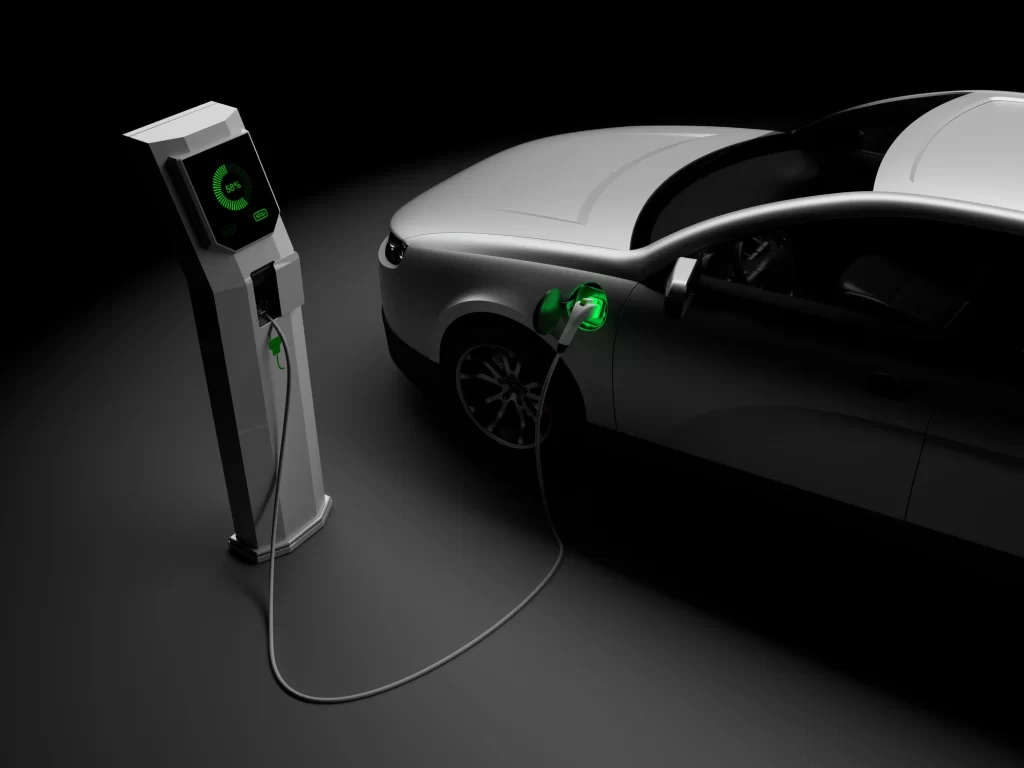V2G, or “Vehicle to Grid,” is a technology that enables electric vehicles to communicate and exchange energy bidirectionally with the electrical grid. This technology allows electric vehicles to feed energy back into the grid using their energy storage units. In this article, we will provide a detailed answer to the question: What is V2G (Vehicle to Grid)?
How Does V2G Technology Work?

V2G technology equips electric cars with the capability for bidirectional energy transfer. This means that the vehicle’s battery not only charges but can also transfer stored energy back to the grid. This process involves several key components:
- Electric Vehicle: Must be equipped with a battery and charging system that supports V2G technology.
- Smart Charging Station: A unit that controls and directs the flow of energy, acting as an intermediary between the vehicle and the grid during both charging and energy feedback.
- Energy Management System: Software and hardware systems that optimize energy transfer between the grid and the vehicle.
Advantages of V2G
- Energy Storage and Stabilization: Electric cars‘ batteries have a large energy storage capacity. V2G technology helps stabilize the electrical grid against demand fluctuations by using these batteries. For instance, during peak demand hours, vehicles can supply energy back to the grid to balance the demand.
- Renewable Energy Integration: Renewable energy sources like wind and solar power have variable production characteristics. V2G helps improve the efficiency of renewable energy usage by using vehicle batteries to balance these fluctuations.
- Savings on Electricity Bills: Vehicle owners can generate income by selling energy back to the grid or save on electricity bills by charging their vehicles during low-rate periods and feeding energy back during high-rate periods.
- Emergency Power Source: V2G technology can serve as a backup power source for homes during emergencies, such as power outages. The energy stored in the vehicle’s battery can be used to keep critical home systems running.
Challenges and Barriers of V2G Technology

While V2G offers many advantages, there are also challenges and barriers to its widespread adoption:
- Infrastructure Requirements: Effective operation of V2G technology requires smart charging stations and advanced energy management systems. The installation of this infrastructure can be time-consuming and costly.
- Battery Wear and Tear: Continuous energy exchange can lead to faster degradation of electric vehicle batteries, requiring more frequent replacements and adding extra costs for vehicle owners.
- Regulatory and Legal Barriers: For V2G technology to become widespread, energy regulations and legal frameworks need to be harmonized. Current energy market regulations may pose obstacles to V2G applications.
- User Participation: The success of V2G relies on the participation of electric vehicle owners. However, the interest and participation rates of users in this technology can affect its success.
The Future of V2G
V2G technology has great potential with the increasing use of electric vehicles and renewable energy sources. In the future, it is expected that V2G will play a more active role in energy markets and become an important tool for energy management.
- Energy Markets and Smart Grids: V2G can change the dynamics of energy markets. Integration with smart grids can manage energy demand and supply more efficiently and enable innovative applications in energy trading and pricing mechanisms.
- Sustainable Cities and Communities: Efforts to create sustainable cities and communities increase the importance of V2G technology. Using electric vehicles not only as transportation means but also as energy sources can play a significant role in reducing cities’ carbon footprints.
- Energy Independence and Security: V2G technology can enhance energy independence and security. Especially in regions with limited energy resources, local energy production and storage can be crucial for ensuring energy security.
For other content like “What is V2G (Vehicle to Grid)?” you can check out our general category.
V2G (Vehicle to Grid) technology enables electric vehicles to engage in bidirectional communication and energy exchange with the electrical grid. It offers advantages such as energy storage and stabilization, renewable energy integration, savings on electricity bills, and serving as an emergency power source. However, it also faces challenges like infrastructure requirements, battery wear and tear, regulatory and legal barriers, and user participation. In the future, V2G technology is expected to play a more active role in energy markets and sustainable cities, enhancing energy independence and security and providing a more sustainable and efficient energy management solution.
You might be interested in:
What Happens to End-of-Life Electric Vehicle Batteries?
Electric Utility Vehicles: Usage Areas and Advantages
Do Electric Vehicles Have Catalytic Converters?

